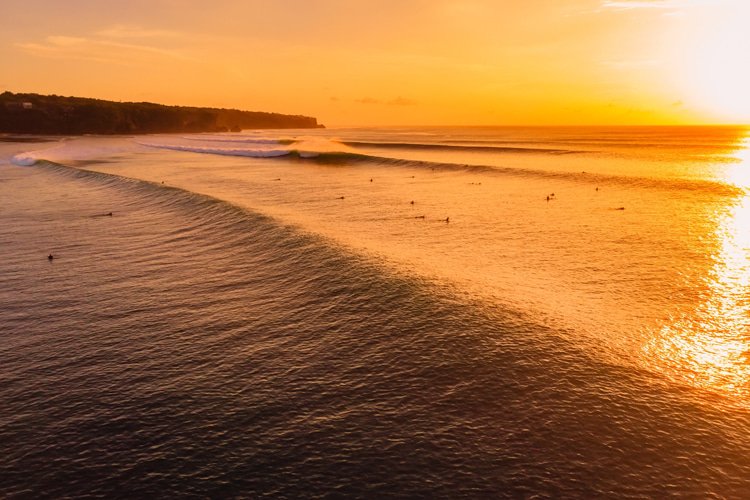Understanding Ocean Waves: The Key to Better Surfing
Surfing isn’t just about riding the waves; it’s also about understanding the science behind those waves. As aspiring surfers, we each have the potential to become oceanographers and wave forecasters. The more we comprehend the mechanics of waves, the better we can ride them. This article explores how ocean waves function, diving into their motion mechanics to enhance your surfing experience.
The Nature of Ocean Waves
At its core, an ocean wave is not just a simple rise and fall of water. When you stand on the shoreline and observe the incoming swell, you notice a complex motion that doesn’t fit neatly into scientific classifications. Ocean waves can’t be defined as simply "up and down" or "back and forth"; rather, they exhibit a combination of both movements. These are termed orbital waves—an amalgamation of transverse and longitudinal waves that create the dynamic motion surfers strive to master.
For an in-depth understanding of oceanography and wave mechanics, resources like the National Oceanic and Atmospheric Administration (NOAA) provide extensive information on wave behavior and coastal processes.
Transverse Waves Explained
To effectively grasp the essence of ocean waves, it’s vital to explore the fundamental types of waves. Transverse waves, for instance, move energy by shifting particles in a direction perpendicular to the wave’s travel. A classic illustration of this is a rope: if you hold one end and snap your wrist, a ripple races across the length of the rope. The wave moves forward while individual segments only raise and lower.
Light waves also exhibit transverse behavior, though they aren’t visible in the same way as physical mediums. This principle underscores the concept of disturbance being perpendicular to energy flow, which can be likened to standing on a trampoline while someone jumps nearby—feel the lift and drop but no lateral movement.
The Role of Longitudinal Waves
In contrast, longitudinal waves showcase the opposite motion. Here, particles move parallel to the wave direction. Sound waves serve as prime examples, as molecules don’t drift across a room but instead compress and stretch along their path. If you picture a slinky on the ground and push one end, the coils will shuffle back and forth without moving sideways. This emphasizes that the particle movement aligns with the wave’s travel, vital for grasping the ocean’s unique wave characteristics.
To explore more on wave types and their impacts, you can visit ScienceDirect for scholarly articles focused on wave mechanics.
The Fusion of Wave Dynamics
Now, let’s connect the dots and examine the ocean’s hybrid wave dynamics. The scientific term for these active ocean waves is surface waves, which incorporate elements from both transverse and longitudinal waves. As water particles rise with the wave like in a transverse wave, they also drift forward and backward like a longitudinal wave. This results in a circular, or more accurately, orbital path.
When a surfer is seated on their board and a wave approaches, they rock gently. However, the reality is more complex. If you could examine their motion closely, you’d find they move forward at the crest of the wave and backward at the trough, forming a continuous loop. This kinetic dance reinforces why paddling to match the wave’s forward speed is critical for successfully catching and riding it. To delve into the science of surfing, resources like SurferToday can provide further insights.
The Impact of Depth on Wave Motion
Understanding the dynamics doesn’t end with surface observation. The orbits created by ocean waves alter with water depth. Near the surface, the circular motions of water particles are broad and expansive. However, as you go deeper, these orbits become smaller, eventually fading into non-existence. In deep water, the energy of the wave travels without interacting with the seafloor. As waves approach shallower regions, their orbits compress into elliptical shapes, leading to a steepening effect before crashing spectacularly.
This phenomenon is essential for surfers seeking optimal conditions, as knowing how waves behave in different depths can significantly affect your ability to ride successfully.
Conclusion: Elevate Your Surfing Experience
Surfing is an art form that blends physical skill with scientific understanding. By delving into the intricacies of wave mechanics—from transverse and longitudinal waves to their hybrid behaviors—you can enhance your surfing experience and improve your technique. Whether you’re a beginner or a seasoned pro, knowledge is key.
As you embark on your surfing journey, don’t forget to fuel your body with proper nutrition. Catch the sun, surf, and endless adventure — all while staying energized and healthy with Nature Made supplements! Plus, enjoy an exclusive 25% OFF your first order! Don’t miss out—click here to start your journey to wellness now. Dive into health today with Nature Made!





